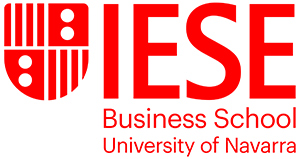In recent years, the use of the expression “C-level” has become more and more widespread when referring to the top-level executives who occupy the highest positions within a company. In some cases, these senior managers form part of their company’s board of directors.
The “C” refers to “chief” and the “C-executive” almost everyone is familiar with is the CEO (Chief Executive Officer). But there are many other top managers in positions starting with the third letter of the alphabet. Just what are these positions? Here you’ll discover who’s who in an executive organizational chart and some of the new emerging roles on board of directors.
Traditional C-level executives titles and responsabilities
Executives responsible for the strategic decisions of a company make up what’s known as the C-level echelon. For this reason, some C-suite executives form part of the board of directors.
Common C-levels on boards include:
CFO (Chief Financial Officer)
The CFO is in charge of the financial planning, cost monitoring and control, fiscal management, and other aspects related to the health and financial optimization opportunities of the company. They’re usually in charge of business administration, risk management and auditing. They offer support to management when it comes to strategic analyses and defining company policies.
COO (Chief Operating Officer)
The Chief Operating Officer is the senior manager whose responsibility is to supervise the day-to-day activities and administrative aspects of a company. Often times this includes human resources management, which is why the role includes key areas such as recruitment, training, payroll management and legal and administrative matters. However, this role varies a lot from company to company. In some, this function is closely related to production and service management (i.e., factory management, logistics or office or store operations), leaving people management to the responsibility of another C-level manager under the title of CHRO (Chief of Human Resources Officer).
In many companies, the COO is considered a deputy director to the CEO, making them second in the executive chain of command.
CIO (Chief Information Officer)
Although the information systems managerial role has existed for more than two decades, in recent years it’s gained more relevance because of the digital transformation. The CIO’s functions go beyond systems management to include innovation strategy and aspects related to value creation, such as obtaining and managing key data for the business. In some cases, this manager’s position is known as the Chief Digital Officer or Chief Transformation Officer.
New C-suite executives titles, roles and responsibilities
Although boards continue to prioritize profiles with experience in financial matters and administrative aspects within companies, new needs and trends are emerging that are leading to the formation of more diverse senior management teams with new skills. These new profiles include:
-
Chief Digital Officer
-
Chief Security Officer
-
Chief Experience Officer
-
Chief Marketing Officer
-
Chief Communications Officer
-
Chief Sustainability Officer
-
Chief Wellbeing Officer
-
Chief Happiness Officer
Among the new skills required in top management are those related to the digital transformation of companies and the need to be more customer-centric. Hence, in recent years, chief executives with titles as varied as Chief Digital Officer, Chief Security Officer, and Chief Experience Officer have come on the scene.
Another trend that’s had a direct effect when it comes to appointments is the need to direct growth and market access strategies (efforts led by the Chief Marketing Officer), as well as the reputation of the company, a task usually taken on by the Chief Communications Officer. The latter is also in charge of managing the interest groups close to the company.
Companies’ top management is also adapting to a series of demands from society, which is increasingly more aware of the need to preserve the sustainability of our planet and the quality of life of employees. To this end, the presence of Chief Sustainability Officers is becoming more common, tasked with going beyond compliance with regulations (that until recently were managed by the Directors of Operations or Compliance Departments) to setting goals and designing strategies that lead to greater environmental responsibility and a greater sense of purpose for the business.
In some sectors, caring for employees and concern for attracting younger talent – whose professional preferences and values have changed – have given rise to new positions such as the Chief Wellbeing Officer and Chief Happiness Officer. Although they don’t generally have a place on the board, the mere fact that they exist on senior management organizational charts reveals the importance of the human dimension in current management.
3 competencies for C-level senior management
Regardless of the positions they occupy, today’s C-suite managers are required to have a solid understanding of the reality of their organizations so that they are able to lead transversally (that is, across the organization) and can achieve the objectives of the company in collaboration with its different teams.
Specifically, there are three competencies that are increasingly required in senior management:
1. Organizational agility
The business world has become much more uncertain and fast-paced. Managers capable of thinking in a transversal way with a sense of urgency are needed, equipped to make decisions and direct their implementation in an agile fashion. New agile work methodologies can help, but only a leader with a comprehensive vision of the organization and the ability to “untangle” the organizational complexity of their company will achieve positive results.
2. Ability to align
Because of inertia, organizations tend to create silos and prevent projects from forming part of an overall strategy. Here’s where a manager’s ability to persuade and align the different teams towards more ambitious goals than those of specific departments or projects comes into play.
3. Customers at the core
As much as they move up the organizational chart, managers cannot lose focus of the customer. This trend forces senior managers to constantly listen to customers and clients and to question the user experience and their relationship with the company.
If you are a C-suite executive or aspire to become one, knowledge and experience in your area isn’t enough. Your role now is to step outside your specific area to lead the organization towards new horizons. IESE’s programs for C-suite and senior executives offer the ideal setting to develop these competencies alongside other senior managers. Learn more about them

















